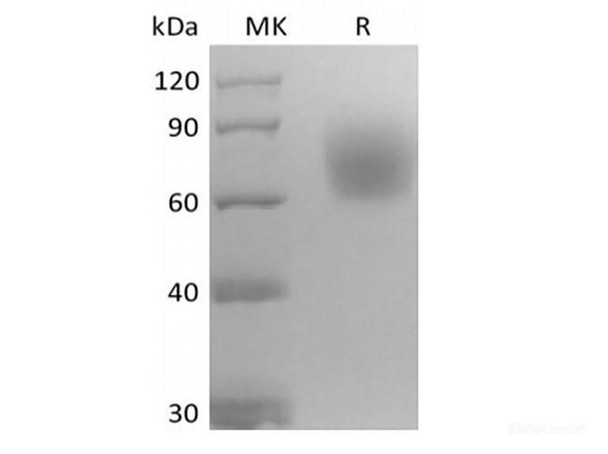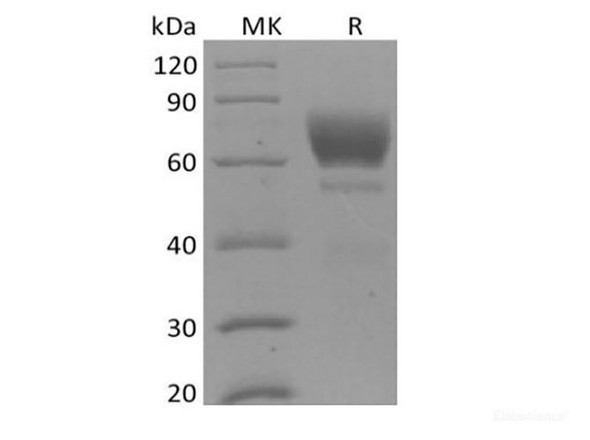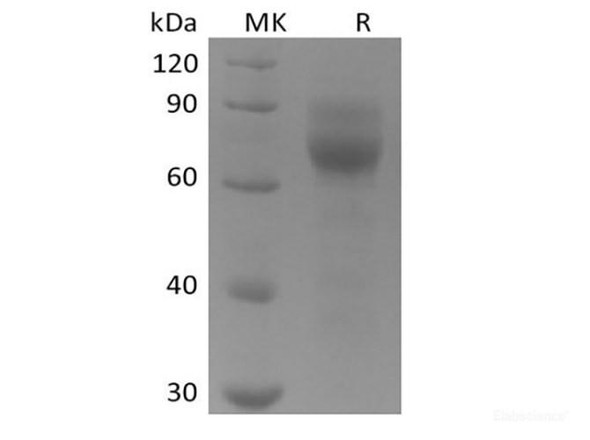Description
| Product Name: | Recombinant Mouse Neurotrophic Tyrosine Kinase Receptor Type 2/TrkB/NTRK2 (C-6His) |
| Product Code: | RPES6666 |
| Size: | 10µg |
| Species: | Mouse |
| Expression Host: | HEK293 Cells |
| Synonyms: | BDNF/NT-3 Growth Factors Receptor, GP145-TrkB, Trk-B, Neurotrophic Tyrosine Kinase Receptor Type 2, TrkB Tyrosine Kinase, Tropomyosin-Related Kinase B, NTRK2, TRKB |
| Mol Mass: | 45.3 kDa |
| AP Mol Mass: | 60-90 kDa |
| Tag: | C-6His |
| Purity: | > 95 % as determined by reducing SDS-PAGE. |
| Endotoxin Level: | < 1.0 EU per μg of the protein as determined by the LAL method. |
| Bio Activity: | Testing in progress |
| Sequence: | Cys32-His429 |
| Accession: | P15209 |
| Storage: | Generally, lyophilized proteins are stable for up to 12 months when stored at -20 to -80°C. Reconstituted protein solution can be stored at 4-8°C for 2-7 days. Aliquots of reconstituted samples are stable at < -20°C for 3 months. |
| Shipping: | This product is provided as lyophilized powder which is shipped with ice packs. |
| Formulation: | Lyophilized from a 0.2 μm filtered solution of PBS, pH 7.4. Normally 5 % - 8 % trehalose, mannitol and 0.01% Tween80 are added as protectants before lyophilization. Please refer to the specific buffer information in the printed manual. |
| Reconstitution: | Please refer to the printed manual for detailed information. |
| Background: | The TRK Family of Tyrosine Kinase Receptor consists of 3 members: TrkA, TrkB and TrkC. The three TRK family proteins have different ligand specificities. They connect to different neurotrophins, including NGF, BDNF, NT-3NT-4/5. TRKA binds NGF, TRKB binds BDNF and NT-3, TRKC binds NT-4/5. At the protein sequence level, human and rat TRKB have greater than 90% sequence identity and the proteins exbihit cross-species activity. TRKB is primarily expressed in the nervous system and it also expression in a wide variety of tissues with low levels. |






